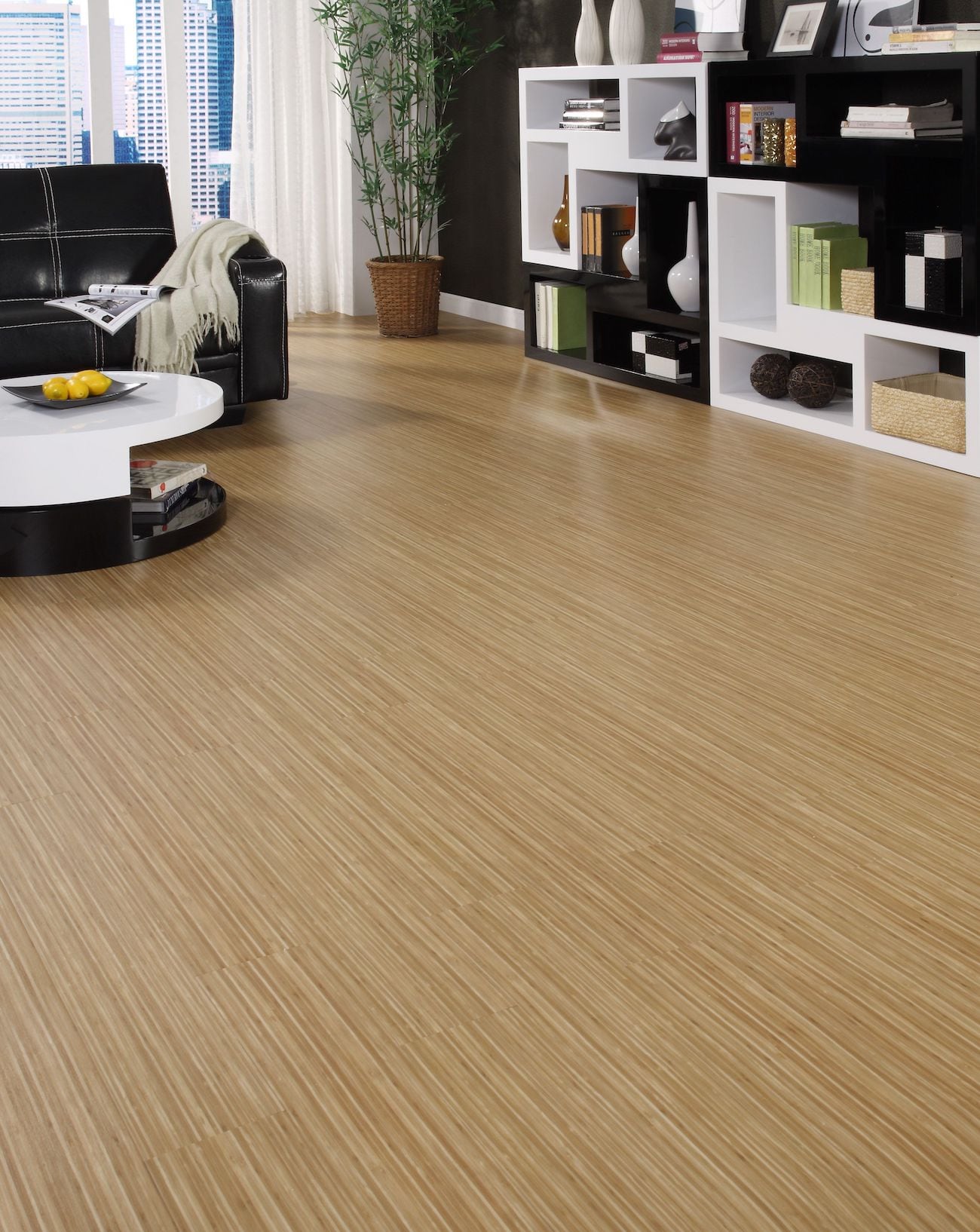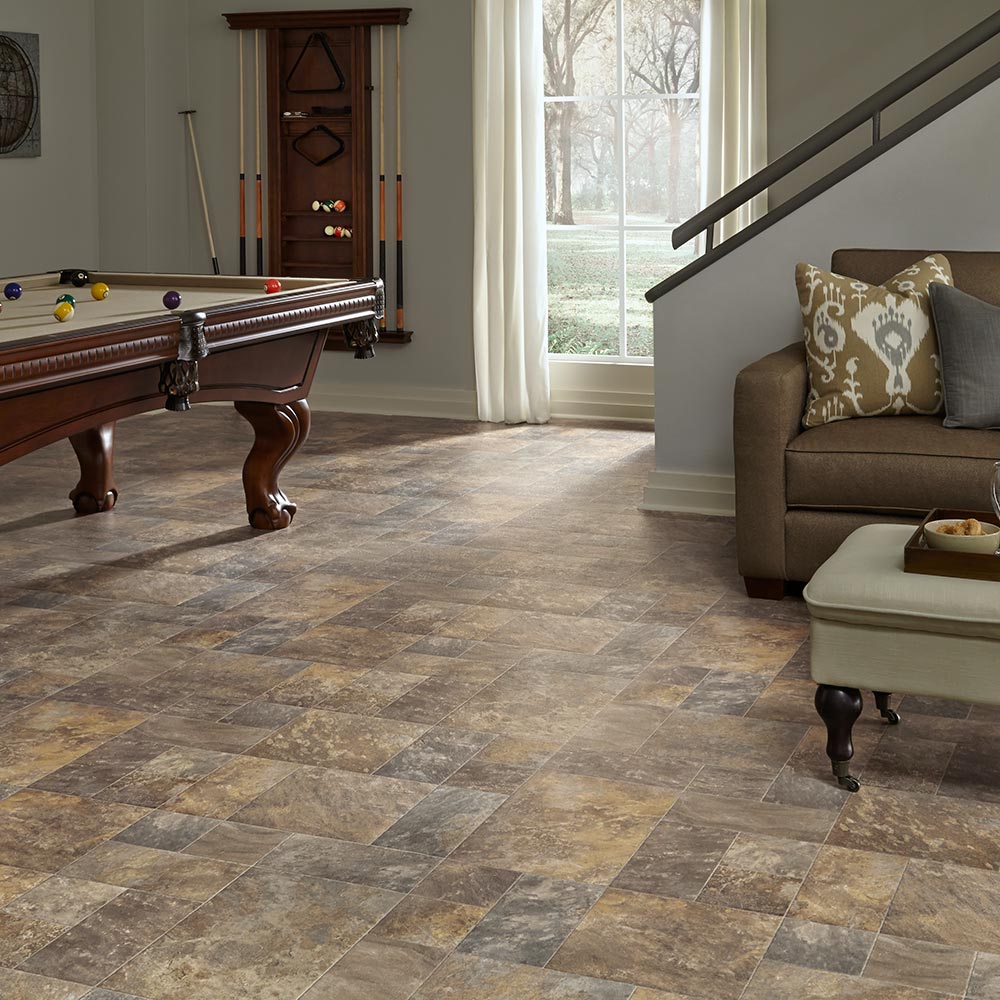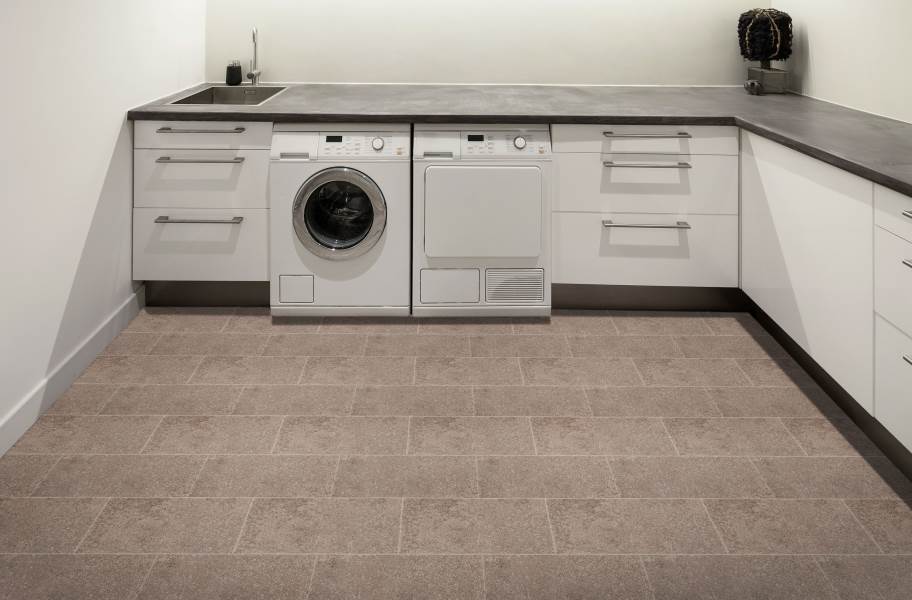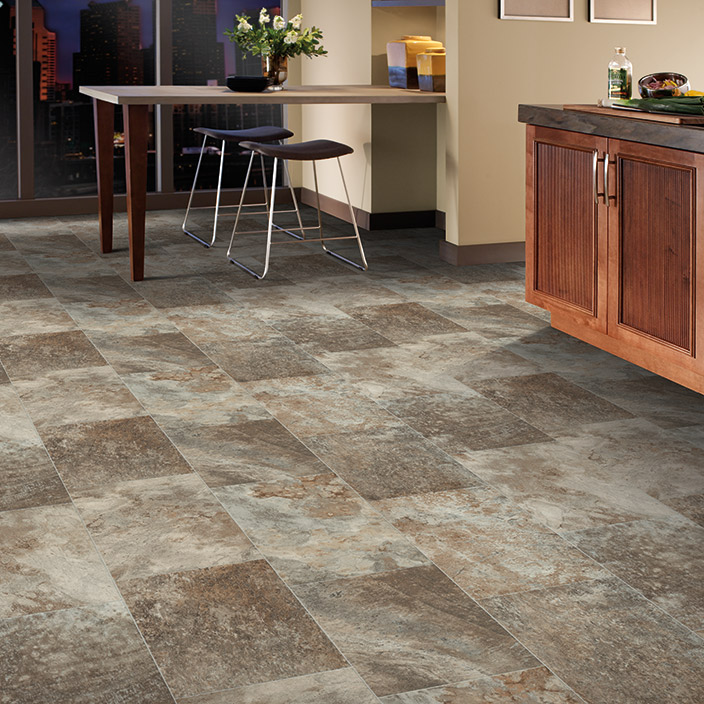Understanding Loose Lay Vinyl Flooring
Loose lay vinyl flooring is an innovative and versatile flooring option that has been gaining popularity due to its ease of installation and variety of design choices. Unlike traditional vinyl flooring that requires adhesive, loose lay vinyl is designed to stay in place using its weight and the friction between the floor and the subfloor. This makes it a particularly attractive option for DIY enthusiasts or those looking for a quick and straightforward flooring solution.
One of the key characteristics of loose lay vinyl flooring is its thickness and backing material, which are engineered to prevent movement once the planks or tiles are laid down. The backing often features a rubberized or textured layer that grips the subfloor, reducing the likelihood of shifting. This design allows the flooring to remain stable even under foot traffic, making it suitable for both residential and commercial spaces.
Loose lay vinyl flooring also offers a high degree of flexibility in terms of design and application. It comes in a wide range of colors, patterns, and textures, including options that mimic the look of natural wood, stone, or ceramic tile. This variety allows you to achieve the aesthetic you desire without the cost or maintenance associated with natural materials. Moreover, because it’s easy to install and remove, you can change the look of a room with minimal effort.
Another significant advantage of loose lay vinyl flooring is its water-resistant properties. Unlike some other types of flooring, loose lay vinyl can be used in moisture-prone areas such as kitchens, bathrooms, and basements without the risk of warping or damage. This makes it an ideal choice for households with pets, children, or high levels of activity, where spills and messes are common.
The durability of loose lay vinyl flooring is another factor that makes it a compelling choice. It’s designed to withstand heavy foot traffic, scratches, and dents, making it a long-lasting option for busy households or commercial spaces. Additionally, it’s easy to maintain, requiring only regular sweeping and occasional mopping to keep it looking its best. The protective wear layer on top of the vinyl adds an extra level of resistance against everyday wear and tear.
Finally, the installation process for loose lay vinyl flooring is one of its most appealing features. Because it doesn’t require adhesive, nails, or staples, the flooring can be laid directly over most existing floors, provided they are clean, dry, and level. This not only simplifies the installation process but also makes it easy to remove or replace individual planks or tiles if they become damaged or if you want to change the look of the room.
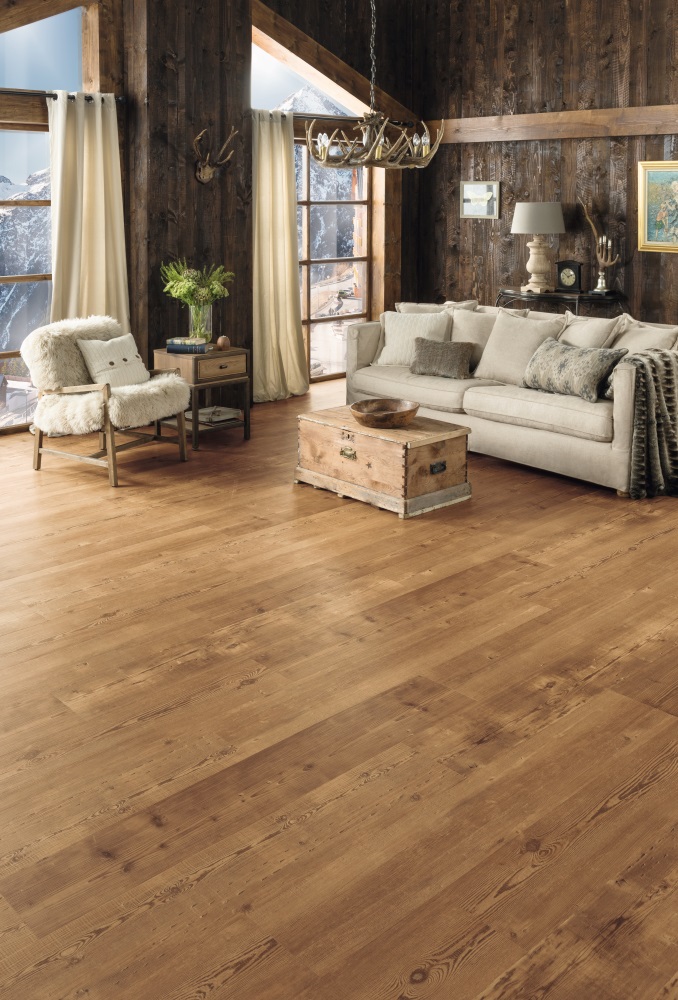
Benefits of Choosing Loose Lay Vinyl Flooring
One of the primary benefits of loose lay vinyl flooring is its ease of installation. Unlike traditional vinyl flooring, which requires adhesives, loose lay vinyl can be installed by simply laying the planks or tiles in place. This makes it a great option for DIY enthusiasts or those who want to save on professional installation costs. The process is straightforward and can usually be completed in a single day, depending on the size of the area being covered.
The cost-effectiveness of loose lay vinyl flooring is another significant advantage. Because it can be installed without professional help and does not require additional materials like adhesives or underlayments, it is often more affordable than other flooring options. This makes it an attractive choice for budget-conscious homeowners or for use in rental properties where cost is a consideration.
Loose lay vinyl flooring is also known for its versatility. It is available in a wide range of styles, colors, and patterns, allowing you to create almost any look you desire. Whether you want the appearance of natural wood, stone, or ceramic tile, loose lay vinyl can provide a high-quality imitation that is both aesthetically pleasing and practical. This versatility extends to its applications as well, as it can be used in virtually any room of the house, including areas with high moisture levels.
Durability is another key benefit of loose lay vinyl flooring. It is designed to withstand heavy foot traffic, making it ideal for busy households, commercial spaces, or areas that receive a lot of use. The top wear layer of the vinyl protects against scratches, dents, and stains, ensuring that the flooring maintains its appearance even in high-traffic areas. Additionally, loose lay vinyl is often backed by long warranties, giving you peace of mind about its longevity.
Maintenance and care for loose lay vinyl flooring are minimal, adding to its appeal. Unlike hardwood or carpet, which require regular refinishing or deep cleaning, loose lay vinyl flooring can be maintained with simple sweeping and occasional mopping. Its water-resistant properties also mean that spills and stains can be easily wiped away without causing damage. This makes it a low-maintenance option that is ideal for busy households or commercial environments where ease of care is important.
Last, the comfort and safety of loose lay vinyl flooring should not be overlooked. The flooring typically has a softer, more cushioned feel underfoot compared to other hard flooring options like tile or hardwood. This can be especially beneficial in areas where you spend a lot of time standing, such as kitchens. Additionally, because it doesn’t require adhesives or chemicals during installation, it’s a healthier choice for indoor air quality, making it safer for homes with children or those with allergies.
Installation Process of Loose Lay Vinyl Flooring
Installing loose lay vinyl flooring is a relatively simple process that most people can complete on their own, making it a popular choice for DIY projects. The first step in the installation process is to prepare the subfloor. It’s important to ensure that the subfloor is clean, dry, and level before beginning installation. Any debris, dust, or uneven areas should be addressed to ensure that the loose lay vinyl planks or tiles adhere properly and lie flat.
Once the subfloor is prepared, you’ll need to measure and plan the layout of the room. Start by measuring the length and width of the room to determine how many planks or tiles you’ll need. It’s also a good idea to plan out the layout, taking into account any patterns or specific design elements you want to achieve. This step is important because it allows you to visualize the final result and make adjustments before you begin laying the flooring.
After planning the layout, you can begin placing the loose lay vinyl planks or tiles. Start in one corner of the room and work your way out, laying each plank or tile flat on the subfloor. Loose lay vinyl flooring is designed to stay in place using its weight, so there’s no need for adhesives or nails. However, it’s important to ensure that each piece is aligned properly and fits snugly against the surrounding pieces to prevent gaps or shifting.
As you lay the planks or tiles, you may need to make cuts to fit around corners, doorways, or other obstacles. This can be done using a utility knife or vinyl cutter. Make sure to measure and mark the pieces carefully before cutting to ensure a precise fit. Cutting loose lay vinyl is relatively easy compared to other flooring materials, but it’s still important to take your time and make accurate cuts.
Once all the planks or tiles are in place, it’s a good idea to walk over the entire floor to ensure that everything is properly aligned and secure. You may also want to use a floor roller to press down the flooring and ensure a good bond with the subfloor, especially in areas with heavy foot traffic. While loose lay vinyl flooring doesn’t require adhesives, applying a double-sided tape around the perimeter of the room can provide extra stability and prevent movement over time.
The final step in the installation process is to add any finishing touches, such as baseboards or transition strips, to give the room a polished look. These elements not only enhance the appearance of the floor but also help to protect the edges and provide a smooth transition between different flooring types. Once everything is in place, your new loose lay vinyl floor is ready to use and enjoy.
Maintenance Tips
Maintaining loose lay vinyl flooring is simple, making it an attractive option for busy households and commercial spaces. Regular maintenance is key to keeping the flooring looking its best and ensuring its longevity. One of the first steps in maintaining loose lay vinyl is to establish a regular cleaning routine that includes sweeping or vacuuming the floor to remove dirt, dust, and debris.
Sweeping or vacuuming should be done daily or as needed, depending on the level of foot traffic in the area. Dirt and debris can act as abrasives on the floor’s surface, potentially leading to scratches and wear over time. By removing these particles regularly, you can prevent damage and keep the floor looking clean and polished. When vacuuming, use a vacuum cleaner with a hard floor setting to avoid scratching the vinyl.
In addition to regular sweeping, mopping the floor periodically is also important for maintaining its appearance. Use a damp mop with a mild cleaning solution specifically designed for vinyl floors. Avoid using harsh chemicals, abrasive cleaners, or excessive water, as these can damage the vinyl and affect its durability. After mopping, it’s a good idea to dry the floor with a soft cloth or allow it to air dry to prevent any water spots or streaks.
Protecting the floor from potential damage is another key aspect of maintenance. Use felt pads or furniture glides under the legs of heavy furniture to prevent scratches or dents when moving items around. Additionally, consider placing rugs or mats in high-traffic areas, such as entryways or kitchens, to catch dirt and reduce wear on the floor. Just be sure to choose rugs with non-slip backings to prevent them from moving and causing accidents.
Spills and stains should be addressed immediately to prevent them from setting into the vinyl. Because loose lay vinyl flooring is water-resistant, most spills can be easily wiped away with a damp cloth or mop. For tougher stains, a gentle vinyl floor cleaner or a mixture of water and vinegar can be used to lift the stain without damaging the flooring. It’s important to avoid using abrasive scrubbers or harsh chemicals, as these can strip the protective wear layer and cause discoloration.
Finally, regular inspections of the flooring are recommended to check for any signs of damage or wear. Loose lay vinyl flooring is durable, but over time, it may develop minor issues such as lifting edges or gaps between planks. If you notice any problems, address them promptly to prevent further damage. In many cases, loose lay vinyl can be easily repaired by repositioning or replacing individual planks or tiles, making it a low-maintenance and long-lasting flooring option.
Design and Style Options
One of the most appealing aspects of loose lay vinyl flooring is the wide range of design and style options available. Whether you’re looking to create a sleek, modern look or a warm, rustic ambiance, there is a loose lay vinyl option to suit your aesthetic preferences. The flooring comes in a variety of colors, patterns, and textures, allowing you to achieve almost any look you desire.
Loose lay vinyl flooring often mimics the appearance of natural materials such as hardwood, stone, or ceramic tile. Advanced printing technology allows manufacturers to create highly realistic designs that replicate the grain, texture, and color variations of natural wood or stone. This allows you to enjoy the beauty of natural materials without the associated cost or maintenance requirements.
In addition to natural looks, loose lay vinyl flooring also offers more contemporary and abstract designs. Bold patterns, geometric shapes, and vibrant colors are available for those who want to make a statement with their flooring. These options are particularly popular in modern or eclectic interior design styles, where the flooring can serve as a focal point or complement other design elements in the space.
Texture is another important design element in loose lay vinyl flooring. Many options feature embossed or textured surfaces that enhance the realism of the flooring and add a tactile dimension to the space. Whether you prefer the smooth finish of polished stone or the rustic feel of hand-scraped wood, there is a loose lay vinyl option that can provide the desired texture.
Customization is also possible with loose lay vinyl flooring. Some manufacturers offer the ability to create custom designs or patterns, allowing you to tailor the flooring to your specific tastes and requirements. This can be especially useful in commercial settings where branding or unique design elements are important. Customization also allows for the creation of unique and personalized spaces in residential settings.
Last, loose lay vinyl flooring can be used to create different visual effects and layouts within a room. For example, you can use different colors or patterns to define separate areas within an open floor plan, or to create a border or accent pattern within the flooring itself. This flexibility in design allows you to get creative with your space and achieve a look that is both functional and visually appealing.
Environmental Impact and Sustainability of Loose Lay Vinyl Flooring
When considering loose lay vinyl flooring, it’s important to think about its environmental impact and sustainability. Vinyl flooring, including loose lay varieties, has made significant strides in recent years towards becoming more eco-friendly and sustainable. Understanding these aspects can help you make a more informed decision about your flooring choice.
One of the primary environmental concerns with traditional vinyl flooring has been the use of harmful chemicals and non-renewable resources in its production. However, many manufacturers of loose lay vinyl flooring are now focusing on reducing the environmental impact by using recycled materials in their products. By incorporating post-consumer and post-industrial recycled content, these manufacturers are helping to reduce waste and minimize the demand for virgin materials.
In addition to using recycled materials, some loose lay vinyl flooring products are designed to be more easily recyclable at the end of their life cycle. This means that the flooring can be removed and recycled into new products, rather than ending up in a landfill. This circular approach to production and disposal is an important step towards sustainability and reducing the overall environmental footprint of vinyl flooring.
The installation process of loose lay vinyl flooring also contributes to its environmental benefits. Because it doesn’t require adhesives or chemicals, there is no need for off-gassing or the release of volatile organic compounds (VOCs) during installation. This not only makes the installation process safer for the environment but also contributes to better indoor air quality, which is particularly important in residential and commercial spaces.
Another environmental advantage of loose lay vinyl flooring is its durability and long lifespan. Because the flooring is designed to withstand heavy use and resist damage, it doesn’t need to be replaced as frequently as other flooring types. This reduces the overall demand for new materials and the energy associated with manufacturing and transporting new flooring. Additionally, the ability to replace individual planks or tiles without removing the entire floor further extends the life of the flooring.
Energy efficiency is another consideration when it comes to the environmental impact of loose lay vinyl flooring. Vinyl flooring typically has good insulating properties, which can help to reduce energy consumption by keeping spaces warmer in the winter and cooler in the summer. This can contribute to lower energy bills and a reduced carbon footprint over time.
Last, it’s important to look for certifications and labels that indicate a product’s environmental performance when choosing loose lay vinyl flooring. Certifications such as FloorScore, GREENGUARD, and LEED (Leadership in Energy and Environmental Design) can assure that the flooring meets certain environmental and health standards. By choosing certified products, you can feel confident that your flooring choice is contributing to a more sustainable and environmentally-friendly future.
Common Mistakes to Avoid
While loose lay vinyl flooring is a user-friendly and versatile option, some common mistakes can affect its performance and longevity. One of the most frequent mistakes is not properly preparing the subfloor before installation. The subfloor needs to be clean, dry, and level to ensure that the vinyl planks or tiles lay flat and stay in place. Any debris, dust, or uneven areas can lead to bumps or gaps in the flooring, compromising its appearance and stability.
Another mistake is using the wrong cleaning products or methods on loose lay vinyl flooring. Harsh chemicals, abrasive cleaners, and excessive water can damage the flooring’s surface and lead to discoloration or warping. It’s important to use cleaning products that are specifically designed for vinyl floors and to avoid over-wetting the surface. Regular sweeping and gentle mopping with a mild cleaner is sufficient to keep the flooring in good condition.
Improper installation techniques can also lead to problems with loose lay vinyl flooring. For example, not allowing the flooring to acclimate to the room’s temperature and humidity before installation can result in expansion or contraction after it’s been laid. This can cause gaps between the planks or tiles or lead to buckling over time. It’s essential to follow the manufacturer’s instructions for acclimating the flooring before installation to ensure a proper fit.
Failing to protect the flooring from heavy furniture or sharp objects is another common mistake. While loose lay vinyl flooring is durable, it can still be scratched or dented by heavy items if they are not handled carefully. Using felt pads under furniture legs and avoiding dragging heavy objects across the floor can help prevent damage. Additionally, placing rugs or mats in high-traffic areas can reduce wear and tear on the flooring.
Not addressing spills and stains promptly can also lead to long-term damage to loose lay vinyl flooring. Although the flooring is water-resistant, allowing liquids to sit on the surface for extended periods can cause staining or seep into the seams. It’s important to wipe up spills immediately and clean the area with a damp cloth to prevent any potential damage.
Finally, neglecting regular maintenance of the flooring can lead to a gradual decline in its appearance and performance. While loose lay vinyl flooring is low-maintenance, it still requires regular care to keep it looking its best. Skipping routine cleaning or ignoring minor issues like lifting edges or small gaps can result in more significant problems down the road. Regular inspections and prompt attention to any issues will help to extend the life of the flooring and maintain its aesthetic appeal.
What makes loose lay vinyl flooring different from other types of vinyl flooring?
Loose lay vinyl flooring is unique because it does not require adhesives, nails, or staples for installation. Instead, it relies on its weight and the friction between the flooring and the subfloor to stay in place. This makes it easier to install and remove compared to other types of vinyl flooring, which typically require adhesive or locking mechanisms. Additionally, loose lay vinyl flooring is often thicker and has a textured backing that helps it grip the subfloor, providing stability and reducing movement.
Can loose lay vinyl flooring be installed over existing flooring?
Yes, loose lay vinyl flooring can often be installed directly over existing flooring, provided the surface is clean, dry, and level. This makes it a convenient option for renovations or when you want to change the flooring without removing the old one. However, it’s important to ensure that the existing flooring is in good condition and free of any damage that could affect the new vinyl. If the subfloor is uneven, it may need to be leveled before installing the loose lay vinyl to ensure a smooth and stable finish.
Is loose lay vinyl flooring suitable for high-moisture areas like bathrooms and kitchens?
Loose lay vinyl flooring is highly suitable for high-moisture areas such as bathrooms and kitchens because it is water-resistant and designed to handle spills and humidity without warping or damage. Unlike hardwood or laminate flooring, which can be susceptible to water damage, loose lay vinyl can be installed in areas with high moisture levels without concerns about swelling or buckling. This makes it an excellent choice for rooms where water exposure is common, such as bathrooms, kitchens, and laundry rooms.
How durable is loose lay vinyl flooring, and how long does it last?
Loose lay vinyl flooring is known for its durability and ability to withstand heavy foot traffic, making it a long-lasting flooring option. The protective wear layer on top of the vinyl provides resistance against scratches, dents, and stains, ensuring that the flooring maintains its appearance even in busy areas. With proper care and maintenance, loose lay vinyl flooring can last for many years, often with warranties ranging from 10 to 20 years or more, depending on the manufacturer and the quality of the product.
Can loose lay vinyl flooring be used in commercial spaces?
Yes, loose lay vinyl flooring is a popular choice for commercial spaces due to its durability, ease of installation, and variety of design options. It can handle the demands of high-traffic areas such as offices, retail stores, and hospitality settings, where long-lasting and easy-to-maintain flooring is essential. Additionally, the ability to replace individual planks or tiles without disrupting the entire floor makes it a practical solution for commercial environments where maintenance and repairs need to be carried out quickly and efficiently.
What are the design options available with loose lay vinyl flooring?
Loose lay vinyl flooring offers a wide range of design options, including styles that mimic the look of natural wood, stone, or ceramic tile. Advanced printing technology allows for highly realistic patterns and textures, providing the aesthetic appeal of natural materials without the associated cost or maintenance. In addition to natural looks, loose lay vinyl is available in bold patterns, geometric designs, and vibrant colors, making it suitable for modern, contemporary, or eclectic interiors. The versatility of loose lay vinyl allows for creative and personalized flooring designs in both residential and commercial spaces.
Related Posts:
